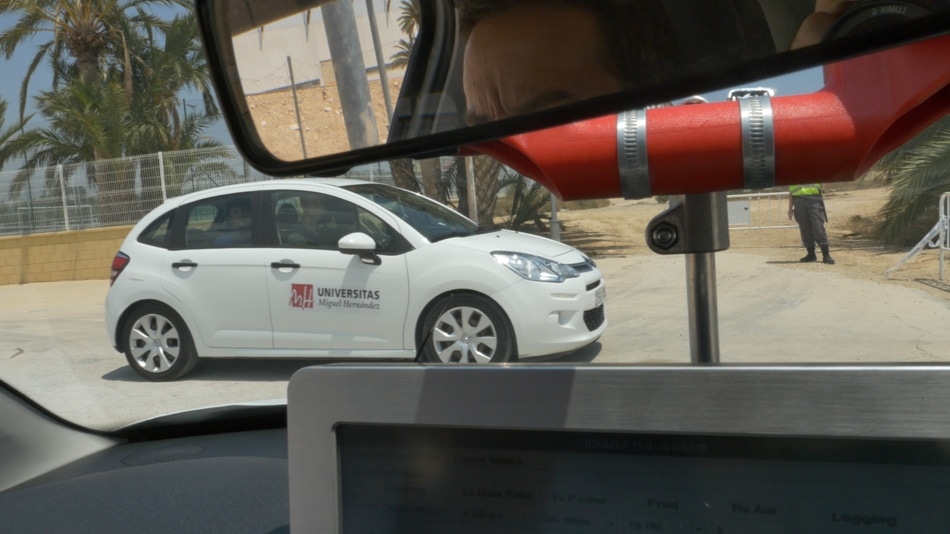Apr 4 2019
Scientists of the UWICORE laboratory, of the Department of Communications Engineering and the I3E Engineering Research Centre of the Miguel Hernández University (UMH) of Elche, have demonstrated that the coexistence between conventional and autonomous vehicles will markedly affect the estimated effects of autonomous driving. According to this research, until a minimum of 15% of vehicles are autonomous, no advantage will be seen with respect to the fluidity of traffic and the capabilities of motorways, unless solutions are put forth to ensure an efficient coexistence of conventional and autonomous vehicles.
 Image credit: Ruvid
Image credit: Ruvid
According to the director of the UWICORE group, Javier Gozálvez, the futuristic vehicles will be safer and more efficient than the present-day ones, and will be characterized by better automation and connectivity. Autonomous driving will enable, for instance, for the formation of platoons or convoys (called platooning) on motorways. These convoys are groups of vehicles that will be able to drive at a very short distance from one another without it involving any danger. Numerous studies conducted earlier have revealed that autonomous driving can increase the capabilities of roads and reduce fuel usage. However, the UMH research has exposed that, without efficient solutions that ensure the coexistence of autonomous and conventional vehicles, platooning would not boost the capabilities of motorways (measured as the intensity of traffic in vehicles per kilometer) until a minimum of 15% of all vehicles are driven autonomously.
This is because of the impact that the implementing of maneuvers on behalf of autonomous vehicles can have on conventional traffic and vice-versa. For instance, a maneuver to form a convoy can entail that adjacent conventional vehicles have to lower their speed for it to take place. On the other hand, a conventional vehicle could hinder or delay a traffic maneuver by autonomous vehicles if, for instance, the security distances among vehicles are not kept. Actually, the UMH research shows that more than 50% of autonomous driving maneuvers may not happen because of issues in the coexistence of conventional and autonomous vehicles.
The research explains that realizing the projected advantages of autonomous driving, therefore, necessitates solutions that enable a safe and efficient coexistence among both types of vehicles. These solutions and a greater presence of autonomous vehicles will make it feasible, according to professor Gozálvez, to markedly increase the capabilities of roads; between 35 and 40% with regards to traffic intensity in the assessed situations with a presence of autonomous vehicles of 50%. Currently, the UMH researchers are working on measures to boost the appearance of autonomous vehicles with the execution of V2X wireless communications among vehicles. These communications will allow vehicles to swap information on their maneuvers to synchronize them with neighboring vehicles and ensure not only their security, but also fluidity of traffic.
The UMH study has been conducted within the charter of the PREDICT project (Predictions and Characterization of traffic with data from connected vehicles and autonomous vehicles), sponsored by the Directorate General of Traffic. In the project, the UMH scientists have also created artificial intelligence solutions grounded on deep neural networks to enhance the traffic predictions that use data from connected vehicles and fixed sensors.